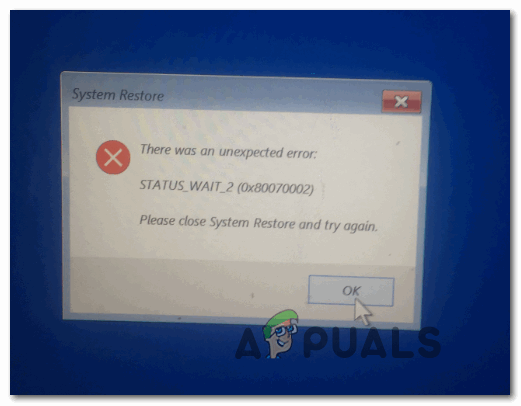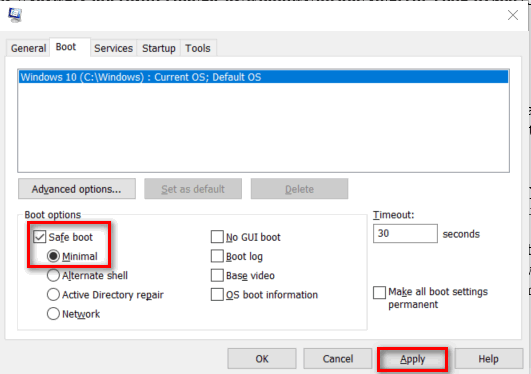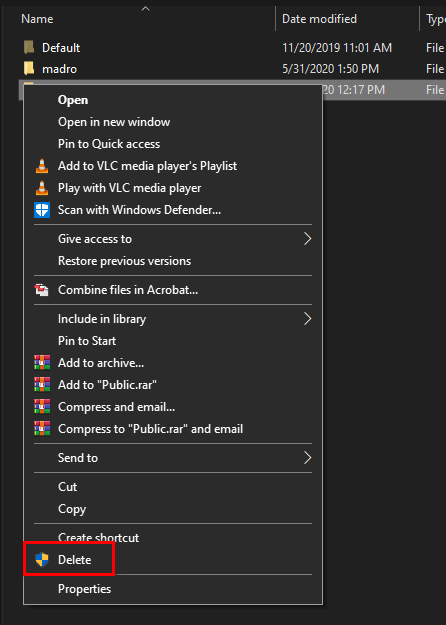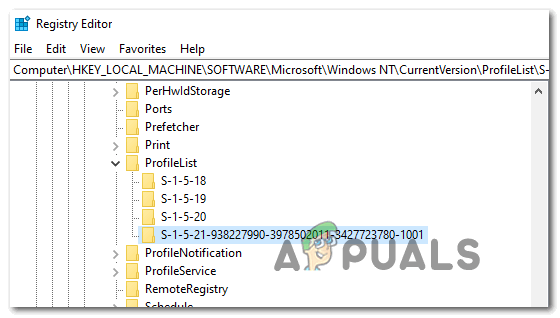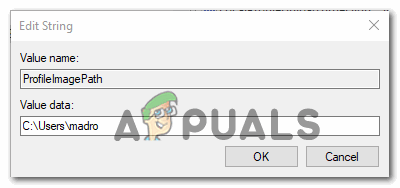As it turns out, there are several different causes that might end up triggering the STATUS_WAIT_2 Error:
Performing an SFC and DISM scans
If you tried to repeat the operation multiple times and every attempt fails with the same STATUS_WAIT_2 Error, it’s quite possible that you’re actually dealing with some type of system file corruption. Fortunately, there are a couple of utilities that every Windows version comes bundled by default that should allow you to fix this issue. SFC (System File Checker) and DISM (Deployment Image Servicing and Management) are two solid utilities that will and up fixing the majority of low and medium tier instances of corruption. Some users that were previously struggling with this error message have confirmed that the STATUS_WAIT_2 error was fixed after they ran both scans in quick succession. If you want to repeat this process, start with a simple SFC scan – Every dependency of this tool is stored locally so you can run it without an internet connection. But be careful that after you start it, interrupting the utility forcibly (by closing the CMD window) might produce additional logical errors. Once the SFC scan is complete, restart your computer and wait for the next startup to complete. After the next booting sequence is complete, go ahead and start a DISM scan. Note: Keep in mind that this operation will require a stable Internet connection – DISM uses a sub-component of Windows Update to download healthy copies of the files that are affected by system file corruption. Once the DISM scan is complete, do a final system reboot and repeat the action that was previously triggering the ‘STATUS_WAIT_2‘ error once the next startup is complete. In case the same problem is still active, move down to the next potential fix below.
Using a 3rd party Backup equivalent
If the method above wasn’t effective for you and you don’t want to do anything too radical like resetting your Windows components, there are certainly some 3rd party alternatives that you might consider. Keep in mind that System Restore, File History, System Image, and Backup are utilities that Microsoft is not actively maintaining and developing on Windows 10. It’s entirely possible that future Windows releases will no longer include System Restore since 3rd party equivalents are way better than the built-in solution. If you’re looking for a 3rd program capable of doing the same thing as System restore, consider one of these free alternatives:
Macrium ReflectAcronis True ImageClonezillaMiniTool Partition WizardSolarwinds Backup
Note: All of the options presented above are either free or include a trial version. In case you don’t want to use a 3rd party solution to create a backup of your Windows version, move down to the next potential fix below.
Deleting the DefaultUser0 Account (if applicable)
If you’re seeing this issue on a Windows 10 computer, it’s likely that the backup process fails due because of a known bug that ends up creating a ghost account (defaultuser0) that Windows keeps trying to get a hold of even though it no longer exists. This is even more likely if the logs of the error reveal a reference like this: If this scenario is applicable, you should be able to fix the issue entirely by following a set of instructions that will guide you through the process of removing the DefaultUser0 account. Here’s what you need to do: In case you’re still encountering the same ‘STATUS_WAIT_2‘ error, move down to the next potential fix below.
Resetting every Windows Component
If none of the fixes above have worked for you, it’s likely that you’re dealing with some kind of serious system file corruption that you won’t be able to fix conventionally. If this scenario is applicable, you should simply go ahead and reset every relevant Windows component that might end up affecting the System Restore component. You can do this either by going for a complete wipe of your OS drive or by targeting ONLY the files belonging to your operating system:
Clean Install – This is the easier operation out of the two since you can do it directly from the menus of your Windows version and it doesn’t require you to use a compatible installation media. However, this is only recommended if you don’t really care about what happens with the personal data you’re currently storing on the drive.Repair install – This operation is also known as an in-place repair and is the recommended approach if the OS drive (C:) currently stores data that you can’t afford to lose. But keep in mind that you need to use a compatible installation media to pull this through. However, the main advantage of this method is that all your applications, games, user preferences, and personal media will remain intact.
Fix: To use System Restore, you must specify which Windows Installation to…Fix: System Restore Failed to Extract the File from the Restore PointHow to Fix System Restore Point Error Code 0x80042308 on Windows 10?Fix: System Restore Failure with Error 0x81000203
